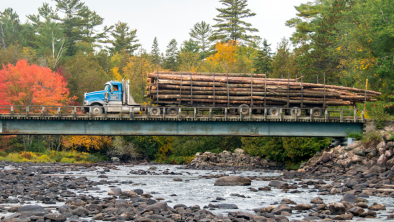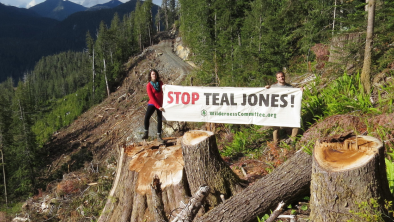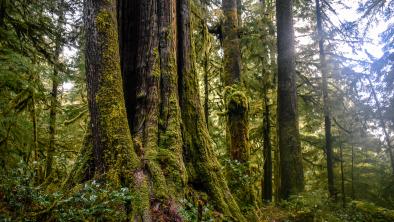No right time to create more tree farm licences
Times Colonist
By Torrance Coste
September 22, 2014
Have you ever had a friend who just won’t listen when everyone is telling them to get out of an unhealthy relationship? That’s what comes to mind when I think of the B.C. government’s relationship with tree farm licences. No matter how many British Columbians speak out to say they’re a bad idea, every year the provincial government renews its push for more TFLs.
In 2013, the Minister of Forests quietly tried to rush a bill through the legislature to enable conversions of public-forest lands from volume-based tenures to area-based tenures, or TFLs. The alarm was raised by First Nations, unions, forestry experts, opposition party members and environmental groups such as the Wilderness Committee, because this would give too much control to giant logging corporations. The backlash and public outcry forced the government to shelve the legislation.
This year, the government hired former B.C. chief forester Jim Snetsinger to lead a review and write a report on how to create more TFLs. The report was released just before the Labour Day long weekend.
First, it’s worth noting a few positives about the report’s release. After receiving it, the government stated it won’t introduce legislation to create more TFLs this year or in the spring of 2015, citing the landmark Tsilhqot’in decision by the Supreme Court as a reason for holding off. The report also recognizes the importance of community support and acknowledges the lack of social licence as an impediment to creating more TFLs.
This is a big shift from past forest policy in B.C., where social licence has been an afterthought, if considered at all.
To many, this is seen as a victory for the thousands of British Columbians who spoke out against TFLs during the review. But on the whole, the report misses the mark, failing to recognize the major shortcomings of existing TFLs and leaving the door open for new ones.
The government’s rationale for more TFLs is to stabilize timber supply and improve the economy in forest communities. But even the government’s own statistics show that these arguments are astonishingly weak.
Between 1990 and 2011, just over a third of the mills in the B.C. Interior closed. On the coast, where TFLs cover far more land than in the Interior, more than half of all mills closed, and that’s without the presence of the mountain pine beetle. On the coast, the proportion of raw log exports (an extremely controversial practice vehemently opposed by forest workers’ unions and environmentalists alike) is a staggering 13 times higher than in the Interior.
The government claims more TFLs will help small community and family-owned forest companies. Again, this is a far cry from the reality. Across B.C., 80 per cent of the harvest from TFLs is done by just five huge companies.
This corporate domination was a primary concern during the review period. Even the CEO of logging giant Canfor acknowledged this, stating public opposition was too strong and that now “is absolutely not the time to make changes in tenure administration.” Snetsinger’s report briefly mentions these concerns, but doesn’t make concrete recommendations that would limit corporate control in B.C.’s forests.
The report then recommends increased consultation, review and monitoring for any new TFLs, all of which probably isn’t possible in today’s understaffed and underfunded Ministry of Forests.
Finally, the report states that the review received lots of input on expanding TFLs, both in favour and opposed. This suggests that there were as many people supporting the government’s agenda as there were in opposition, which is inaccurate. Out of 4,300 written submissions, only 15 were in favour of more TFLs.
There’s no question we need to make some big changes in forest management in B.C. Our top priorities should include banning raw-log exports and prioritizing local jobs, ensuring First Nations have access to forest resources they’ve used since time immemorial and conserving remaining old-growth forests to preserve wildlife, protect drinking water sources and sequester climate-changing carbon.
Increasing corporate control by creating more TFLs would make all of this harder to achieve.
The strongest part of the report is that it acknowledges the public’s desire to address the future of forestry in B.C. Every time we’ve had the chance to comment on forest management, people across the province have called on the government to end the corporate stranglehold on public forests.
We can’t just take a “break” from TFLs until after the spring of 2015. It’s time to end this relationship for good.
Photo: Clearcut logging in TFL 44, near Bamfield, Vancouver Island, BC (Torrance Coste)


